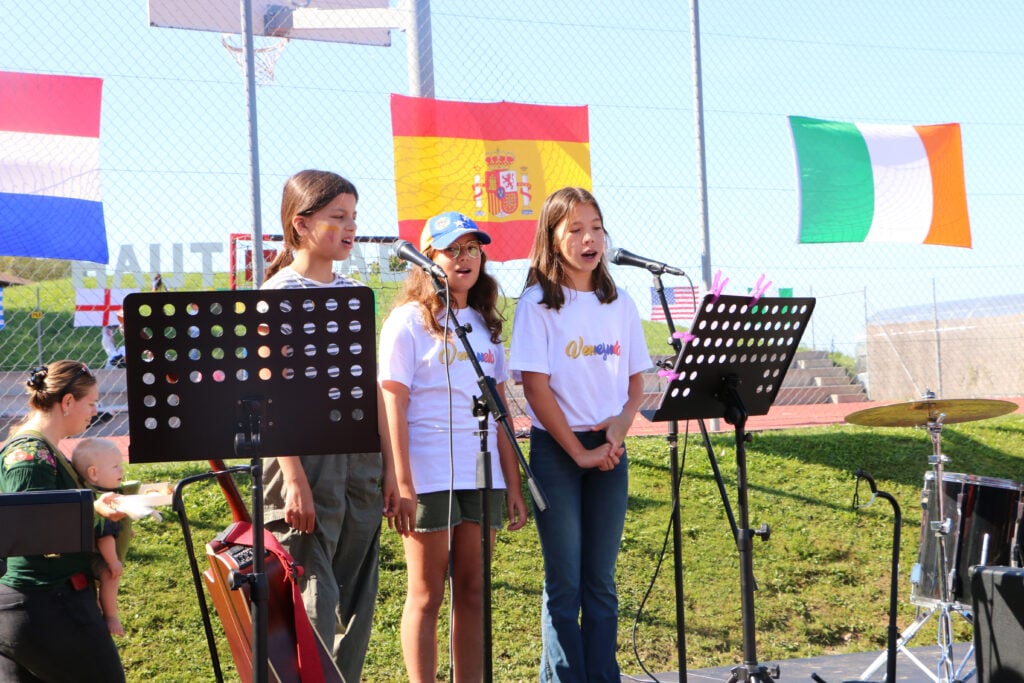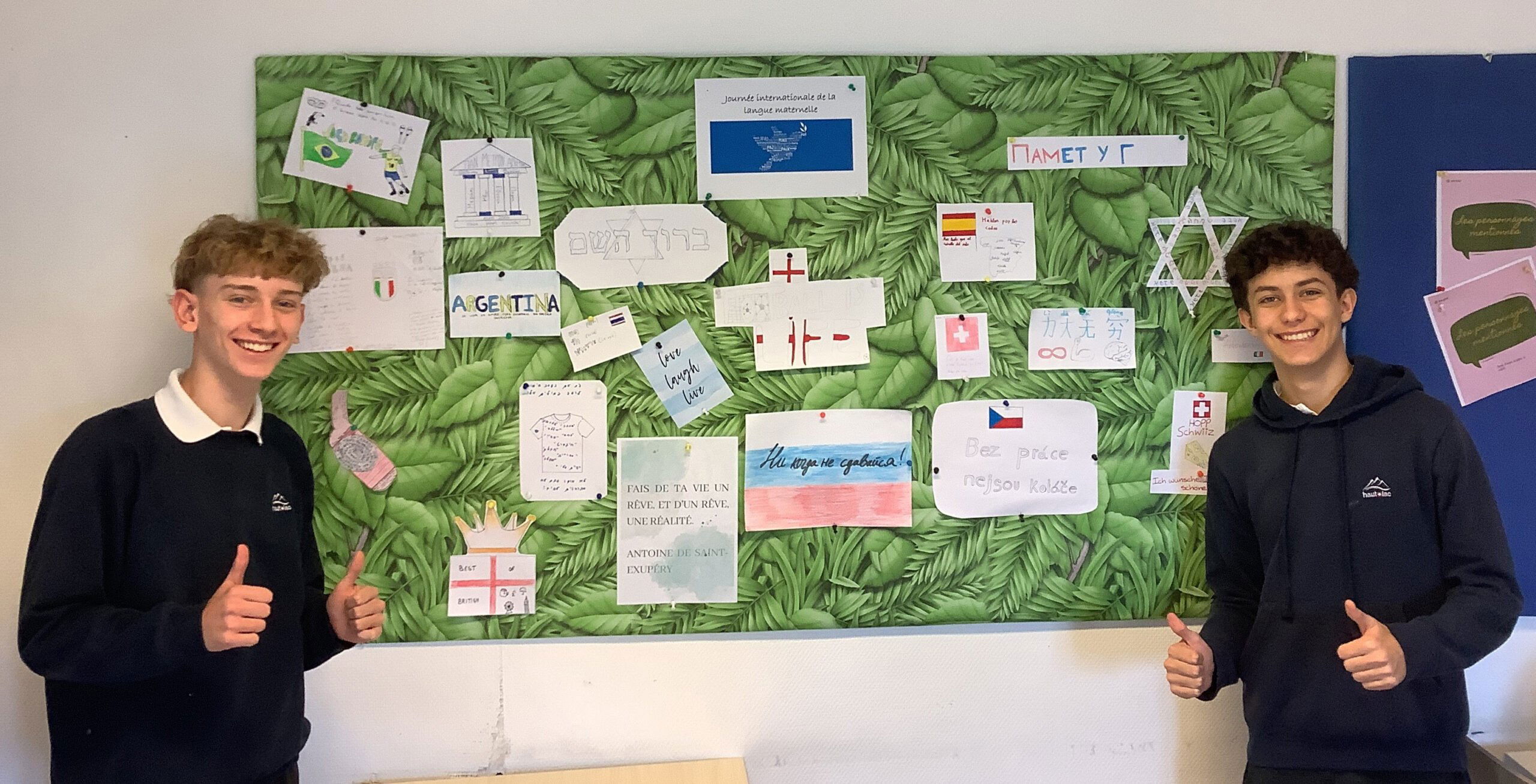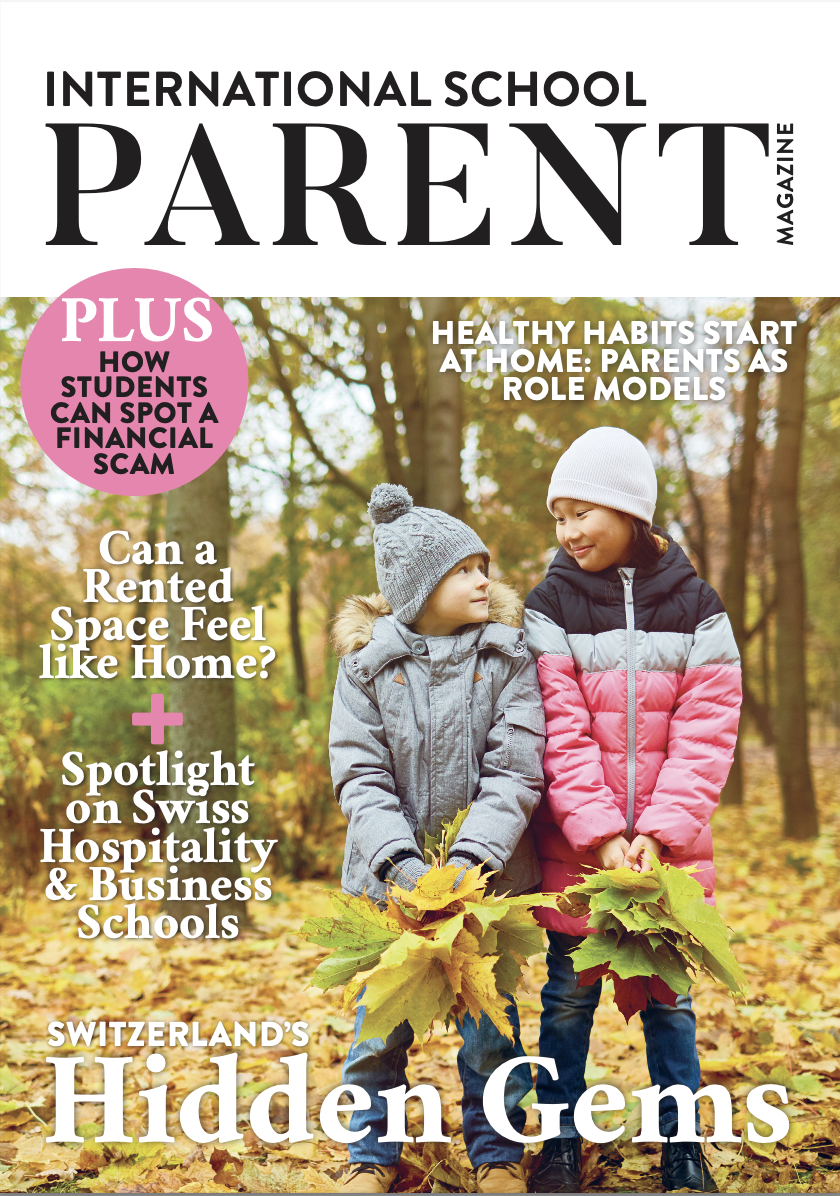Preserving the Mother Tongue*: Safeguarding Identity and Linguistic Diversity in International Education

By Sharon Fleming, Inclusion Coordinator at Haut-Lac International Bilingual School
In Switzerland, a country renowned for its multilingual heritage and international outlook, children grow up surrounded by a unique tapestry of languages and cultures. With its four national languages – German, French, Italian and Romansh – and foreign nationals comprising nearly a quarter of the population, Switzerland is both officially and tangibly multilingual. For international families raising children here, this linguistic richness is both an opportunity and a challenge.
“Third culture” children – children growing up outside their parents’ home country and their own birthplace – might eventually go on to be schooled in several different countries. As a result, these children gain a rich experience of the world and certainly learn to be highly adaptable.
Yet this richness can come with a risk: that of children losing their own linguistic heritage. For parents and educators alike, the task is to ensure that young people remain connected to their mother tongue, and with it, the cultural heritage that shapes their identity.
Why Mother Tongue Matters
Research consistently shows that the mother tongue is a cornerstone of identity. Maintaining a strong foundation in the home language, and everything wrapped up in it, reinforces self-esteem and strengthens a child’s ability to learn additional languages.
Similarly, when children feel their language and culture are valued, they are more confident and engaged learners. The mother tongue is also the language of family intimacy. It is the medium through which grandparents tell stories, parents comfort and entertain children, and cultural knowledge is passed down. When the home language is weakened or lost, maintaining these connections can become difficult.
The Bilingual Advantage
Far from hindering learning, mother tongue maintenance enhances it. Cognitive research has shown that bilingual and multilingual children often develop stronger executive control, problem-solving skills and adaptability. It has also been demonstrated that managing multiple linguistic systems enhances attentional control and mental flexibility.
Importantly, these benefits are not limited to neurotypical children. Research with neurodiverse learners, including autistic children, those with ADHD and children with dyslexia, shows that bilingualism does not cause additional delays or confusion. In fact, for some, it can be an asset. Studies of autistic children, for instance, suggest that exposure to more than one language may support social communication and cognitive flexibility. For provides a secure foundation for identity and resilience in their learning.
Any literacy skills learnt through the home language support literacy in additional languages, which will only benefit the third culture child who is likely to be educated in a different language, sometimes two in the case of bilingual schools.
In brief, a strong foundation in reading and writing in the mother tongue will transfer positively to any new languages learnt, and give children deeper cognitive strategies for lifelong learning.

The Risk of Language Shift
Despite these benefits, language shift is a real and pressing concern. Globalisation has contributed to the endangerment of almost 40% of the world’s 7168 living languages.
It is recognised that when a language ‘dies’, irreplaceable knowledge systems, cultural traditions and ways of seeing the world vanish with it. At the family level, this same truth applies; the loss of a child’s first language is more than a matter of vocabulary. It can pose a rupture in their identity, their sense of belonging and their heritage.
English, as the dominant language of international education and media, quickly takes precedence in children’s lives. Without intentional and meaningful support, children may retain passive comprehension of their family language but lose the ability to speak it fluently.
This “heritage language attrition” is well documented among migrant and international families. The role of the family in nurturing the mother tongue is therefore paramount.
The Role of the Family
Preserving the mother tongue works best when it feels natural and enjoyable, woven into the rhythms of everyday life at home.
The following strategies can help both preserve language and weave it into a child’s sense of identity, turning the mother tongue into a living resource. What matters is creating habits, rituals and fun opportunities that make the language meaningful.
Create language-rich routines: Dedicate certain times of day like mealtimes, bedtime stories, walks or family car rides to speaking only in the mother tongue. Consistent contexts help children associate the language with moments of warmth and family connection.
Share stories and traditions: Tell traditional folk stories or pass down family anecdotes in the family language. Storytelling not only builds vocabulary but also strengthens identity and imagination.
Fill the home with books and media: Make picture books, novels and comics in the mother tongue accessible. Watch cartoons and films (depending on the age of the children, perhaps even the news) in the mother tongue. Turn on subtitles in the mother tongue. The inevitable chat that ensues afterwards will keep the language active in real-life conversations
Use music and play: Sing or play songs, play rhymes or use word-based games. For younger children, music and play are powerful ways to absorb language.
Make family projects multilingual: Cook recipes from your heritage and name the ingredients in the language, or create a family scrapbook with captions written in the mother tongue.
Connect across generations: Encourage your children to video chat or write messages to grandparents and relatives who don’t share the school language. They could give them a video tutorial for their favourite video game or teach them dance moves using the mother tongue. These interactions are often deeply meaningful to both parties and therefore highly motivating to children because they show why the language matters. There may even be old letters, documents or correspondence to peruse together.
Encourage writing: Suggest keeping a diary, writing postcards or creating short stories in the language. Older children might enjoy subtitling family videos or blogging.
Join communities: Look for local cultural centres, weekend language schools or online groups where children can use the language with peers. Friendships built through the mother tongue are among the strongest motivators to keep speaking it.
Celebrate traditions in the language: Festivals, songs and rituals conducted in the mother tongue give children pride in their heritage and a sense of belonging.
Support schoolwork through the home language: encourage your child to discuss their homework, brainstorm ideas or problem-solve in the mother tongue before switching to the language of instruction for the final version. ‘Translanguaging’ and using the home language as a learning tool boosts understanding and confidence, while reframing learning this way will validate the home language as a powerful tool, not a barrier.
What Schools can do
Given the many hours children spend at school each day and the strong influence of peers on their language choices, personal growth and linguistic development, schools become vital allies in preserving and valuing the mother tongue.
At Haut-Lac International Bilingual School, we make space for students’ home languages as much as possible, ensuring they are seen, heard and valued.
UNESCO Mother Language Day: We dedicate a day around the official day (21st February) each year to celebrating linguistic diversity, where students present stories, poems, songs and cultural traditions in their family languages.
International Day: As part of our major annual International Day celebrations, where families of over 50 nationalities get together to share food and drink from their home country, students take to the stage to perform songs and music in their mother tongue. Most recent performances have featured songs in Ukrainian, Spanish, Japanese and German.
Examinations in community languages: We support students to take International Baccalaureate Language B (Acquisition) or Language A (Language & Literature) examinations in their mother tongue. The IB offers these examinations in 17 languages.
Similarly, it is sometimes possible for a child to complete externally assessed coursework in their mother tongue. Both give formal recognition to their proficiency in their mother tongue.
Library Resources: By expanding our collection to include student-recommended titles in their mother tongues, our library ensures linguistic diversity is represented and valued.
Translanguaging practices: In classrooms, students are encouraged to use their mother tongue as a resource for brainstorming, research and collaborative work.
Similarly, in the primary and infant school, parents are often invited to discuss and contribute to their child’s learner passports in their mother tongue, and receive translated versions to allow them to do so. This validates their child’s identities and deepens understanding, especially during the early language acquisition stages of the language(s) of instruction.
Multilingual research: Students are invited to consult sources in their home languages, which not only enriches academic projects but also highlights the value of linguistic diversity in scholarly inquiry.
All of these practices are purposefully implemented at our school to convey one very powerful message to our students and their families: despite the predominance of French and English at our bilingual school, a student’s first language is a core part of who they are and what they bring to our community.
Toward a Multilingual Future
Working together, parents, educators and students can create an environment where the mother tongue is not just maintained, but celebrated. In doing so, we give children the tools to embrace diversity, navigate multiple cultural worlds, and build a strong, confident sense of self.
In a global society, multilingualism is no longer a luxury; it is a necessity. Preserving the mother tongue equips our children with the roots to know where they come from, and the courage and drive to engage fully in a diverse, multilingual, multicultural future.
*In this article, the author uses the term mother tongue, as UNESCO does, to refer to a
child’s first or family language, though some educators also use terms like home or heritage language.
Sources
- Bialystok, E., Craik, F. I. M., & Luk, G. (2012). Bilingualism: Consequences for mind and brain. Trends in Cognitive Sciences, 16(4), 240–250.
- Cummins, J. (2000). Language, power and pedagogy: Bilingual children in the crossfire. Multilingual Matters.
- Cummins, J. (2001). Bilingual children’s mother tongue: Why is it important for education? Sprogforum, 7(19), 15–20.
- Drysdale, H., van der Meer, L., & Kagohara, D. (2015). Children with autism spectrum disorder from bilingual families: A systematic review. Review Journal of Autism and Developmental Disorders, 2(1), 26–38.
- Hambly, C., & Fombonne, E. (2012). The impact of bilingual environments on language development in children with autism spectrum disorders. Journal of Autism and Developmental Disorders, 42(7), 1342–1352.
- Montrul, S. (2016). The acquisition of heritage languages. Cambridge University Press.
- UNESCO. (2010). Atlas of the world’s languages in danger. UNESCO Publishing.

